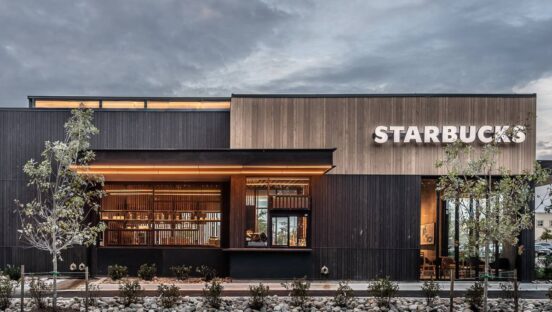Starbucks announced Monday that it’s realigning its leadership structure to accelerate growth around the world.
As part of the move, the coffee chain created the role of North America CEO. The position will be filled by Michael Conway, the current group president of international and channel development and an employee of Starbucks since 2013. The company selected Conway because of his “deep experience in strategic planning” and his “efforts to support building our brand and culture around the world.” Sara Trilling will remain president of North America, focusing on enhancing the employee experience and growing North America’s store footprint.
Conway and Trilling will oversee a U.S. business that’s projected to surpass 16,300 units in Starbucks’ fiscal 2024. In the first quarter, North America and U.S. comps increased 5 percent, fueled by a 4 percent rise in average ticket and a 1 percent bump in transactions.
The business segment saw traffic falter in November due to boycotts related to the Israel and Palestine conflict. The boycotts stemmed from an issue between Starbucks and its union group, which posted a tweet in support of Palestine. The coffee giant later sued the organization over using its likeness, claiming people were confused by the social media message and thought it was Starbucks.
Traffic has since rebounded. Also, Starbucks and its union group called a truce and said they will work toward collective bargaining agreements, resolution of legal matters, and a fair process for union organizing after years of public back and forth. Starbucks Workers United represents employees in about 400 U.S. company-operated shops. Stores have been organizing since December 2021, when a group of Buffalo locations first made the move.
Former global CMO Brady Brewer will become CEO of Starbucks International and lead teams in Asia Pacific, Europe, the Middle East, Africa, Japan, Latin America, and the Caribbean. The executive has spent 20-plus years with Starbucks and served in several global, regional, and market-specific roles, including as senior vice president in Starbucks Asia Pacific and as COO of Starbucks Japan. Starbucks China co-CEOs Belinda Wong and Molly Liu will continue leading their business. Seventy-five percent of the company’s new store openings are coming outside of the U.S. The brand wants to reach 55,000 units globally.
Instead of replacing Brewer as CMO, Starbucks will give regional marketing support to each geographic CEO. The company is also creating two new positions to support this function. One is Lyne Castonguay becoming chief merchant and product officer, a new global role focused on product strategy and developing new products and growth platforms. Another executive will be global brand creative leader, which Narasimhan will name at a later date.
“As we look to the future, the opportunity we have is truly limitless,” Narasimhan said in a statement. “Throughout our history, we have continued to reinvent not who we are or what we stand for, but what we do and how we connect with our customers and deliver our long-term aspirations. Because of our partners, and with our strategic plan and world class-leadership team, the best days of Starbucks are ahead of us.”
In other news, the company is shutting down its metaverse/NFT rewards program, Starbucks Odyssey. Launched in beta at the end of 2022, the initiative was powered by Web3 technology and supposed to give rewards customers opportunities to earn collectible “Journey Stamps” (NFTs) and Odyssey Points that would open access to new benefits and immersive coffee experiences.
The metaverse Journeys ranged from taking a virtual tour of Starbucks coffee farm Hacienda Alsacia in Costa Rica to trivia about Starbucks heritage and interactive games. Members could also purchase limited-edition NFTs through a market within the Starbucks Odyssey web app experience and buy or sell NFTs with fellow customers.
The program will officially end March 31. Customers have until March 25 to complete any remaining Journeys.
“While the Starbucks Odyssey Beta program is ending, we are excited for you to see what comes next and are grateful for your consistent engagement and feedback,” the company said in a statement. “We are thankful to have had this opportunity to test into these different ways of driving community and loyalty at Starbucks and we look forward to bringing these learnings to a broader audience.”









